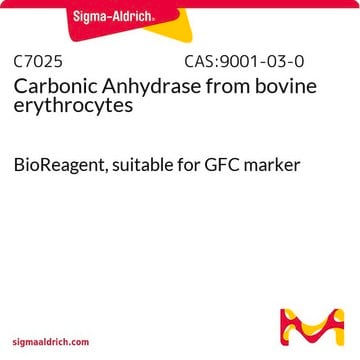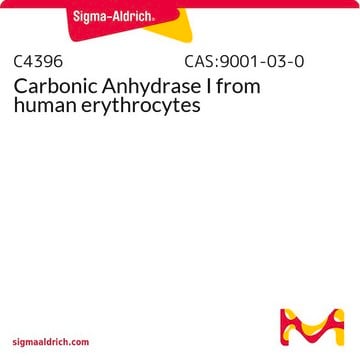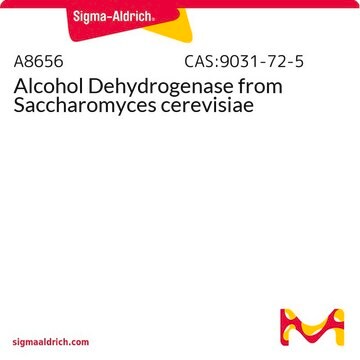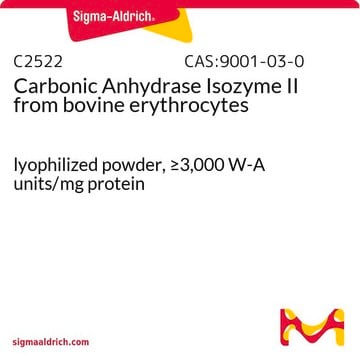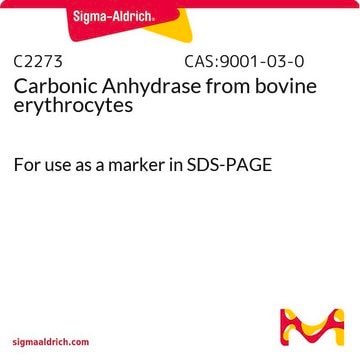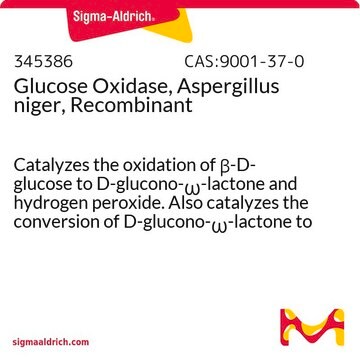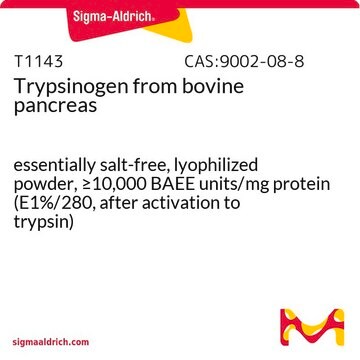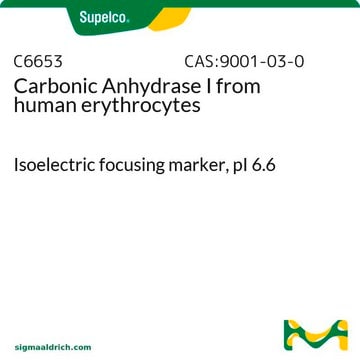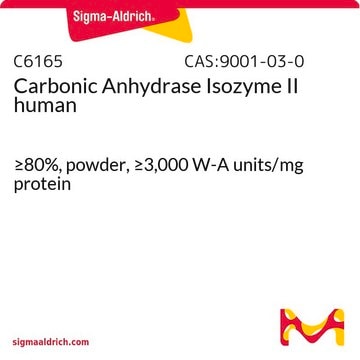The activity of this enzyme is established using a 0.02 M Tris buffer with a starting pH of 8.3 at 0°C. One unit will cause the pH of a 0.02 M Trizma buffer to drop from 8.3 to 6.3 per min at 0°C. However, the optimum pH and temperature is highly dependent on the specific application. There are a number of publications regarding the working parameters for this material. Please see the link below to review an example:
https://pubmed.ncbi.nlm.nih.gov/10701452/#:~:text=It%20was%20determined%20that%20the,61706%20Dalton%20by%20gel%20filtration.
C2624
Anidrasi carbonica
≥95% (SDS-PAGE), specific activity ≥3,500 W-A units/mg protein, lyophilized powder
Sinonimo/i:
Carbonato deidratasi, Carbonato idrolasi
Scegli un formato
Scegli un formato
About This Item
Prodotti consigliati
Origine biologica
bovine erythrocytes
Saggio
≥75% protein basis (biuret)
≥95% (SDS-PAGE)
Stato
lyophilized powder
Attività specifica
≥3,500 W-A units/mg protein
Solubilità
deionized water: >10 mg/mL
Temperatura di conservazione
2-8°C
Cerchi prodotti simili? Visita Guida al confronto tra prodotti
Applicazioni
Azioni biochim/fisiol
Definizione di unità
Avvertenze
Danger
Indicazioni di pericolo
Consigli di prudenza
Classi di pericolo
Resp. Sens. 1
Codice della classe di stoccaggio
11 - Combustible Solids
Classe di pericolosità dell'acqua (WGK)
WGK 3
Punto d’infiammabilità (°F)
Not applicable
Punto d’infiammabilità (°C)
Not applicable
Scegli una delle versioni più recenti:
Certificati d'analisi (COA)
Non trovi la versione di tuo interesse?
Se hai bisogno di una versione specifica, puoi cercare il certificato tramite il numero di lotto.
Possiedi già questo prodotto?
I documenti relativi ai prodotti acquistati recentemente sono disponibili nell’Archivio dei documenti.
I clienti hanno visto anche
-
What is recommand usage temperature and pH range?
1 answer-
Helpful?
-
-
What is the recommended storage conditions for "Carbonic Anhydrase, from bovine erythrocytes?
1 answer-
The recommended storage conditions for Solution of Carbonic Anhydrase, from bovine erythrocytes may be frozen at –20 °C for future use. It is advised to avoid repeated freezing and thawing. Stock solutions may be dispensed into working aliquots, frozen, and then discarded after 2–3 uses.
Helpful?
-
-
What is the isozyme I or isozyme II of Carbonic Anhydrase from bovine erythrocytes (C2624 Carbonic Anhydrase)?
1 answer-
The product C2624, Carbonic Anhydrase from bovine erythrocytes, consists mainly of CA II. However, there are also small levels of CA I and CA IV present.
Helpful?
-
-
Is it possible to obtain information about the type of Carbonic Anhydrase (I or II) included in item C2624-carbonic anhydrase?
1 answer-
Product C2624, Carbonic Anhydrase from bovine erythrocytes, with a purity of ≥95% (SDS-PAGE), consists predominantly of CA II, with small levels of CA I and CA IV present.
Helpful?
-
Active Filters
Il team dei nostri ricercatori vanta grande esperienza in tutte le aree della ricerca quali Life Science, scienza dei materiali, sintesi chimica, cromatografia, discipline analitiche, ecc..
Contatta l'Assistenza Tecnica.
